#the portuguese camino
Text

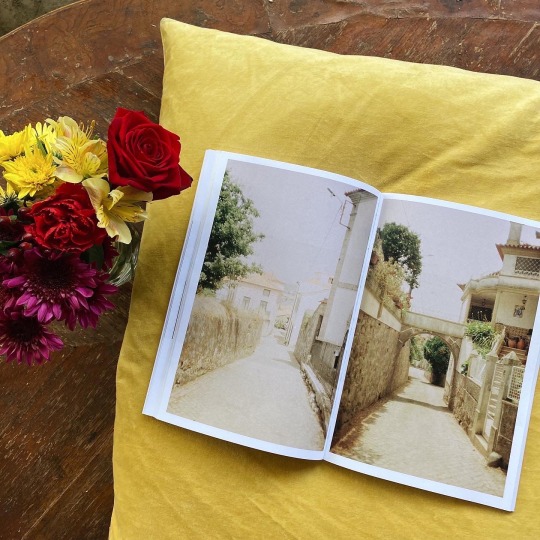
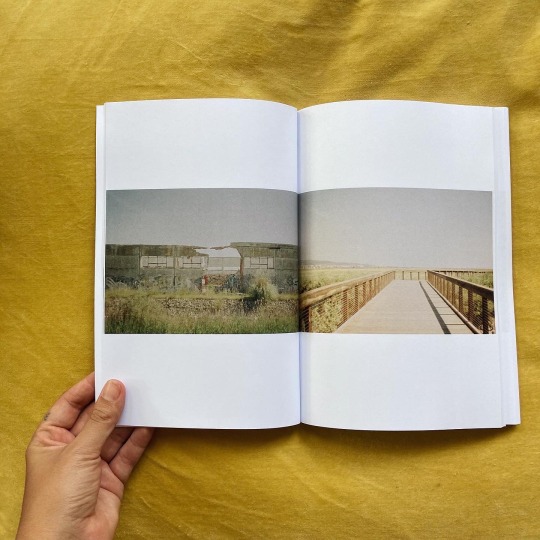

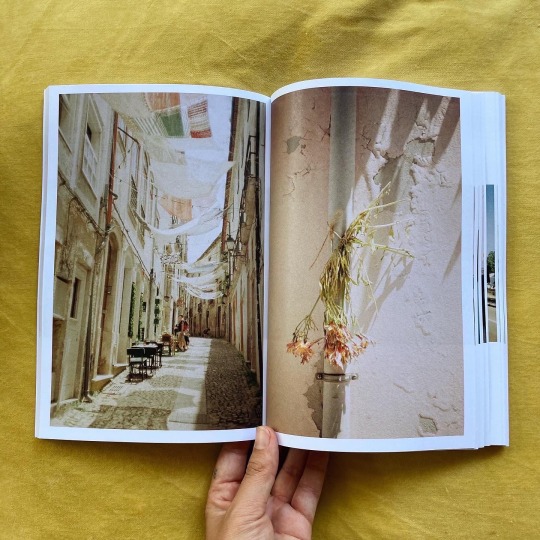


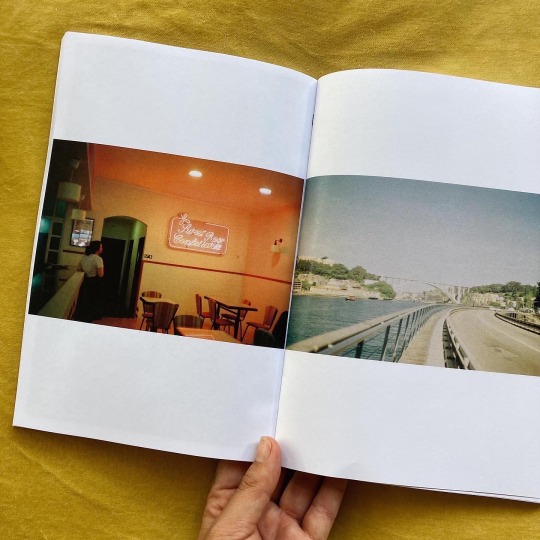
Very excited that my photo book, The Road Is Long & Beautiful, is now available to order! The Road Is Long & Beautiful is a collection of 35mm color photographs from my 570 mile walking pilgrimage along the Caminho Português (The Portuguese Way). This 200 page experiential photo book walks with you through 58 days, one and a half million steps from Lisbon, Portugal to Santiago de Compostela, Spain, through farmland, olive groves, mountains, towns, monasteries, and train tracks. This pilgrimage meant so much to me to meet the land, people, & language of one of my ancestral countries for the first time. The route I walked: the Caminho Português from Lisbon to Porto, the Senda Litoral Coastal Route, crossing to the Central Route from Caminha to Valença, the Central Route, the Variante Espiritual, and ending in Santiago de Compostela. You can get your copy for $25 here ❤️
#photo book#the portuguese camino#camino#the camino#camino de santiago#the camino portuguese#the caminho portugues#art books#photography books#the portuguese way#portugal#spain#travel photography#35mm#35mm photography#analog#analogue photography#pilgrimage#walking pilgrimage#backpacking#trekking
80 notes
·
View notes
Text

mornings my camino de Santiago🔥
#coffee#cafe#morning#good morning#cozy#cup of coffee#breakfast#vintage#moment#relaxing#pastel de nata#portuguese#portugal#camino#foodporn#pastry
155 notes
·
View notes
Text
Panxoliñas: cantigas de Nadal en Galego!
It's all fun and games getting into music from less common European languages/dialects, until
Spotify doesn't have the lyrics at all, and neither does....literally anyone else
Even if they do, when you put it through google translate you might get back either mostly nonsense, or bits that are totally fine and bits that are nonsense or even untranslated
OH HEY there's an entire wiktionary and subreddit for this language! ...it's all in a language I do not speak (yet) >_<
And I recognize that this is nowhere near the difficulty of getting into music in a non-European language/dialect that's less popular. Like, there's still quite a bit of it on Spotify.
But also: whyyyyyy does google translate struggle so much with Galician/Galego when it's so closely related to Portuguese and Spanish!!!! *cries into hands*
I already know I need to actually make a commitment to learning Spanish, but also, everything online about Galician/Galego that isn't in that language is in ...Spanish.
(Even though Galician is closer to Portuguese! But Galicia is a region in Spain! So here we are.)
#my life#as I've said elsewhere: I thought I was just into that one album of music about the Camino de Santiago#but it turns out I do in fact just really like Galician folk#imagine Spanish Portuguese and Irish music all smashed together and you're not terribly far off???#bagpipes! accordians!#my fave song so far is called Da Rosa Rosiña#and it has both a hurdy-gurdy and castanets and makes me wanna dance so bad#it's amazing omgggg#but also I have like only the vaguest idea what it's about lolol#it's Christmas-related somehow???#galician folk music
5 notes
·
View notes
Text
Portugal: Small Country, Big Value
Chris and Deah visit several cities in Portugal, hop on the Camino Portuguese, and hop right back off.

View On WordPress
#backpacking#best things to do in#budget travel#Camino Portuguese#Camino Santiago#Coimbra#how to get to#lisbon#Nazarè#porto#portugal#sintra#travel#travel blog
4 notes
·
View notes
Text
Bis zum nächsten Mal: #Ultreia
youtube
0 notes
Text
to the next

after my first camino (frances), just when i thought " i want to walk camino again, next is…camino portuguese ", i got pseudorheumatism(rheumatoid arthritis).
i hear that…"rheumatoid arthritis is almost incureable". this perception has been mainstream for a long time(until the present day). it makes me feel depressed, while no wonder i got the feeling.
i searched internet and books for who got all better, and i found that they were. there are two opinions "can be completely cured" and "cannot be cured". huuum…i want to be fully cured, so that i need to take the opinion of "can be completely cured".
so now, i'm looking for many methods of natural remedies and try them.
i got nervous if i will be able to go on a pilgrimage again and felt sad because my body has hurt all over for last few monthes. according to the people who said "rheumatoid arthritis can be completely cured", it's so important to focus on what i want to do or to be after cured. so i declare now here !
・i'll walk my camino again(next:portugues).
・i'll see many countries and meet many people, and make it my job(for the near future).
・i'll sing a song in nature.
・i'll live perfectly freely(be a freelancer).
・i'll do what i only want to do.
・i'll be relaxed to myself and others.
for the next, i want to write the process here. because my pain varies from day to day & time to time, i don't know what & how is in the future. anyway, i want to try various things positively !
初めての巡礼を歩き終えて「はやくまた歩きたい!」と思っている矢先、疑リウマチになりました。
リウマチは進行性の病気、薬で症状を抑えるしかない=治らない病気、というのが以前の認識で(いまも主流みたい)、それを思うと気が滅入るいっぽう、あたりまえだよ!と、治った人はいるのだろうか、治るということを言っているお医者さんはいるのだろうかと探しまくって、現在は多数派ではなくとも「治る派」がいることを知りました。私は治したいのだから、「治る派」の意見を取り入れて実践する必要がある!と思い、いろいろな自然療法を���索しながら、自分の体調を観察しています。
この数か月、身体中痛くて、また巡礼に行くことはできるのかな…と不安になったり悲しくなったりしていたけれど、「治る派」の人達の話では「治ったあと何がしたいか」に意識を向けることが大事、ということで、宣言します。
「また巡礼に行きたい=行く」
「いろいろな国を見たい、いろいろな人に会いたい、できればそれを仕事のひとつにしたい=見る、会う、する」
「自然の中で歌いたい=歌う」
「完全にフリーランスで生きたい=生きる」
「やりたくないことをしたくない=しない」
「自分にも他者にもおおらかにいたい=いる」
手始めに、また巡礼に行くまで、その経過を書き留めていきたい。現時点では、日によって時間帯によって症状が違っていて、安定してラクにいられるというような毎日ではないので、先のこともわかりませんし~どんなもんかな?と思いつつも、前向きにいろいろチャレンジしたいな!と思っています。
#camino#camino francés#santiago de compostela#pilgrims#rheumatoid arthritis#rheumatism#camino portugues#journey#travel#カミーノ#巡礼#サンチャゴデコンポステラ#旅行#旅#リウマチ#trip#french way#portuguese#spain#espana#portuguese way
0 notes
Text
Sept 1, 2022: Lucca - Part 1 - Yesterday
Got up in Amsterdam at 03:30 yesterday to catch a 7:15 flight followed by three trains, arriving in Lucca about 15:30. Surprisingly, the entire trip from Edmonton (45 hrs door to door) ran like clockwork despite all the horror stories about air travel in a post pandemic world. Stuffing our carry-on bags with a week’s worth of clothes, sundries and a suitcase tracker seems to have been complete overkill.


After unpacking and a quick shower to wash off the road, we set about exploring Lucca. Our first stop was the Cathedral of St. Martin of Tours to purchase a pilgrim’s credential and have our first stamp applied. The credential is a record of your pilgrimage verified by religious and secular bodies along the way, proving that you have walked at least 100 km to Rome (or cycled at least 200). You submit it to the Office of Pilgrims beside St Peter’s Basilica and you receive your Testimonium. Kim and I already have one from walking the Via San Francesco, along with Compostela from the Camino Portuguese (Lisbon to Santiago) but, as everyone knows, you can’t have too many Testimoniums.

Next stop was the Piazza Della Anfiteatro for dinner among the tourist throngs This is an oval shaped piazza surrounded by buildings that are built upon and from the ruins of a 2nd Century Roman Amphitheatre that held bout 10,000 spectators. The base of the arena is now about 3 metres below ground level. Some great pizza and a couple of glasses of wine in one of the restaurants that fill the piazza and we were off to bed to try to shake off the effects of jet lag. During my last visit to Lucca, Lu-Anne and I had pizza around the corner in an alleyway because I was too cheap to pay tourist prices in the square. I saved at least 2€ and ate a sheet of cardboard topped with alleged seafood that was actually lumps of something totally unidentifiable. Lesson learned at the expense of the worst pizza I ever ate in Italy.

1 note
·
View note
Note
For the last/surnames for your mjv pieces, is there any specific meanings/symbolism when you give them those surnames? Like “Hinoki” for Kieran & Carmine, since Hinoki means “cypress” and it’s a real life tree.
(Sorry if this is a specific question. This is my autistic brain and curiosity of fictional name symbolism)
YES, THERE IS!! i'm also an autistic person who's obsessed with name etymology so i love giving characters ( original or otherwise ) names that symbolizes something about them or something they're associated with.
since i didn't do this before, i'm gonna use this as an excuse to explain the etymology behind the full names i gave the SV kids! some of them are more interesting than others, fair warning.
putting it under a cut since this may get a little long.
CRATER CREW + KITAKAMI KIDS
FLORIAN RUSSEL CAVALLARI & JULIANA SIGAL CAVALLARI
> cavallari ( spanish, from "caballero" meaning knight, cavalier, or rider ) — referencing their connection to koraidon, the designated ride pokémon of scarlet.
> russel ( french, little red ) — meant to signify his role as the protagonist of scarlet.
> sigal ( hebrew, viola ) — meant to signify her role as the protagonist of violet.
NEMONA CAMINO VALIENTE
> camino ( spanish, road ) — references her role as the main companion of the victory road storyline.
> valiente ( spanish, brave or bold ) — meant to signify her forward and adventurous nature.
ARVEN MITO ALFARO
> mito ( spanish, myth or legend ) — references his role as the main companion of the path or legends storyline.
> alfaro ( spanish, the lighthouse ) — references the poco path lighthouse, the professor's old lab and his childhood home.
PEONELOPE " PENNY " CASSANDRA ESPINOSA
> peonelope ( peony + penelope ) — there's no real significance to this name choice, i just thought it'd be funny if peony continued the trend of shoehorning his own name into his kids' in increasingly ridiculous ways.
> cassandra ( greek, to shine or excel ) — meant to sound similar to cassiopeia. it also made me think of shining like a bright star.
> espinosa ( spanish, thorn ) — meant to reference penny's relation to chairman rose through her father, peony. this is actually her mother's maiden name, peony took her surname to distance himself from rose and kept it even after getting divorced.
CARMINE & KIERAN HINOKI
> hinoki ( japanese, species of cypress native to central japan ) — references their family's craft of mask making, as hinoki wood is commonly used to make noh masks.
TEAM STAR CAPTAINS
GIACOMO LAUREANO MORENA
> laureano ( spanish, laurel ) — larry's name from the spanish translation of sv. meant to reference my headcanon that larry is giacomo's father.
> morena ( spanish, dark-haired ) — a loose reference to his dark type specialization.
MELA CANDELLA LUCERO
> candella ( spanish, candle ) — a loose reference to her fire type specialization.
> lucero ( spanish, derivative of " luz " meaning light or morning star ) — also meant to reference her fire type specialization, along with her role as team star captain.
ORTEGA ÁLVARO VERA REGINO
> álvaro ( spanish, elf warrior ) — meant to signify his fairy type specialization.
> vera ( spanish, river bank ) — pulled from veracidad, which i headcanon is the apparel company that ortega's family owns. it also references the ruchbah squad's base's proximity to the water.
> regino ( spanish, from the latin " regis " meaning king ) — meant to signify the affluence of his family.
ATTICUS HENZO
> henzo ( from the scientific name of the fall-blooming anemone, eriocapitella hupehensis ) — atticus's name from the spanish & italian translations of sv. i thought it sounded fitting and i thought it was cool that it could be referencing hattori hanzō, ( who's name could be read as to partially conceal. )
ERI NESPERA
> nespera ( portuguese, common name for loquat ) — eri's name from the italian translation of sv. i just thought it sounded pretty.
BB ELITE FOUR
LACEY TAMAYO TURNER
> tamayo ( japanese, generational jewel ) — loose reference to her relation to lian, clay's hisuian ancestor.
> turner ( from turnip ) — clay's name in the german translation of bw/bw2.
AMARYS NERINE
> nerine ( from the genus nerine ) — amarys's name in the original japanese of sv.
CRISPIN HINO
> hino ( japanese, fire ) — reference to his fire type specialization.
DRAYTON LIRIO
> lirio ( spanish, iris or lily ) — draydon's name in the spanish translation of bw/bw2.
also, here's the first post i made about their names, along with age, gender. and sexuality headcanons!
#some of the characters's names have changed slightly btw!#mostly just giving some additional last names to be more in line with spanish naming conventions#i've named all of the other poketags + rivals too i should share them at some point...#hc : (pkmn) mjverse#hc : (mjv) paldea#mj.txt#asks
20 notes
·
View notes
Text
EL CRIMINAL PORTUGUES DIEGO DA SILVA
Nuestra querida revista Edra nos trae una historia de superación del Guanarteme Engoynaga contra los invasores portugueses.
EDRA - Origen
FAITA FAITA VIRIRUNJUEN
En el siglo XV (c. 1460-1475) el capitán portugués Diego da Silva intentó invadir la ciudad de Gáldar (Gran Canaria), por el camino quemó poblados y asesinó a sus habitantes; pero derrotado por los canarios a las puertas de la ciudad de Gáldar y sin posibilidad de huir hacia los barcos, se encierra con parte de sus hombres en una amplia construcción hecha por los canarios que se encuentra a la entrada de la ciudad.
En este cerco, Diego da Silva se refugia de la justicia de los canarios durante algunos días en los que se encuentra sitiado por completo, hasta que una noche, el Guanarteme Engoynaga, apiadándose de él y de sus hombres decide perdonarles la vida, y para ello usa una estrategia, entrar con ellos en el cerco…
«A el instante que el rey canario se entró mesclado con los christianos fueron tantas las pedradas i los gritos que parecía día de juiçio no se podían, oir saltaron dentro de el sercado con sus astas, diciendo en su lengua 𝐇𝐚𝐢𝐭𝐚, 𝐡𝐚𝐢𝐭𝐚 𝐯𝐢𝐫𝐢𝐫𝐮𝐧𝐣𝐮𝐞𝐧, “Traición traición, mueran como aleves” o “traidores”, Guadartheme daba grandes voces i mandó que volviessen fuera por onde havían entrado, saliéronse todos, i quedaron otros de pie en la pared, mandolos vajar y tiraban de afuera algunos dardos que lastimaron a algunos soldados, juroles el rey que les quitaría las cavezas por Tis Tirma…».
[Marín de Cubas (1687, I: 37r) 2021: 212]
«[…] viendo la accion los Canarios, que havian suvidose sobre lapared, les tiraron pedradas y palos alos Xristianos con gran vocería, decian 𝐟𝐚𝐢𝐭𝐚, 𝐟𝐚𝐢𝐭𝐚 traicion, mueran los traidores; y luego Guadartheme, les juró por su caveza, que sino se aquietaban les quitaria la Vida, alos demandados».
[Marín de Cubas 1694, I, 16: 32v]
ℹ️ Propuesta de traducción: Faita, faita virirunjen. De Fayəḍ, fayəḍ, birirûn-ǝghǝwăn. “Daño o calamidad a los expatriados que vomitan”. [Ignacio Reyes Garcia (18.IX.2023)].
“El enunciado completo, con el (correcto) ajuste que incluye Marín en la versión de 1694, se restituiría: Faita, faita, virirunjuen o, en su versión analítica, Fayəḍ, fayəḍ, birirûn-ǝghǝwăn.
Por el contexto, donde se demanda la muerte de los extranjeros retenidos, acaso la mejor traducción para el sintagma inicial fayəḍ debería contemplar la literalidad del ‘daño’ que se reclama para ellos (imprecación).
Por lo que respecta a la caracterización de los extranjeros, la imagen que se invoca conjuga dos ideas muy significativas a través de una proposición simple, cabe presumir que lexicalizada. El sujeto expreso remite al nombre plural iburerăn, ‘hombres sin familia ni amigos, alejados de su casa o país’. Individuos que, según reza el verbo (*āhghŭh, *āwghŭh > əqqəw) en su (correspondiente) 3ª persona del plural ǝghǝwăn, ‘vomitan’, bien por la situación de peligro inminente para sus vidas o bien como representación más general de los viajeros que reaccionan así después de una larga travesía (o tal vez en alusión al empleo de las armas de fuego)”.
REFERENCIAS
📖 Tomás Marin de Cubas. Conquista de las Siete Yslas de Canaria (1687). Edición crítica de Antonio M. López Alonso (2021).
🌐 www.proyectotarha.org
🌐 www.imeslan.com
📷 Cuesta de Silva (1893). Fedac. El Guanarteme de Gáldar acompañado de guerreros canarios, imponiéndose a sus vasallos, condujo por la Cuesta de Silva al portugués y a los suyos hasta el lugar en que habían de embarcarse.


Ésta zona de la isla es conocida como el barranco de Silva, el puente de Silva y muchos años atrás como la Cuesta de Silva por lo adbruto del terreno al subir.
http://www.proyectotarha.org/?fbclid=IwAR3Oxplyw9CPYdLG-6gH6lTFFRLFy58vpftisOHkWXtO8VavxP7H62zJxRw
https://www.facebook.com/permalink.php?story_fbid=pfbid0HKCiqp4witNhiwxRMDzTT9ep3UM7qCKyhyGvf62cWsUj1XbxLhMrYnHnuu94e4tHl&id=100046478508495&__cft__[0]=AZUPD2mb9k9iphAvfFcwpRKKSqbViWEso9QIIjZdr-6MQkFAHnZusRR0IGR24CvkXi6RPpyPEowifAnalGbiwbQM0iqeypBmFJvidWJgBlYkj6LgjT2RjdM5M7YnSiyJVZcJaVscJjZfEMoYxGT-WwSQb1KThbYpMv1giCiuupalTp9zPGpth9ORgfjbSIVfXzc&__tn__=%2CO%2CP-R
#diego da silva#portugues#godo#guanarteme#engoynaga#aboriginal#aborigenous#indigenous#culture#history#genocide#native#unesco#united nations#canary islands#international criminal court#cou penal international#corte penal internacional#aborigenes#indigenas#cultura#historia#nativos#genocidio#naciones unidas#islas canarias#canarias la colonia mas antigua del mundo#canarias tiene identidad cultural propia#descolonizacion de canarias#canarias libre
11 notes
·
View notes
Text

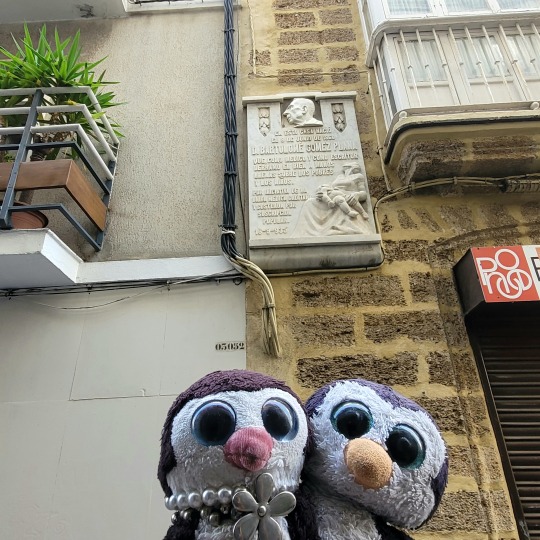
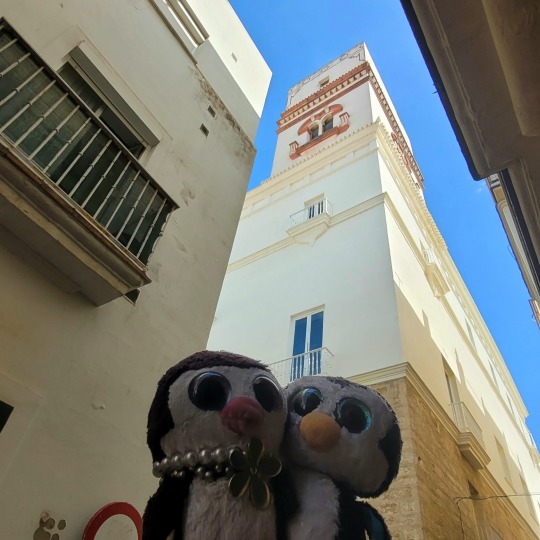


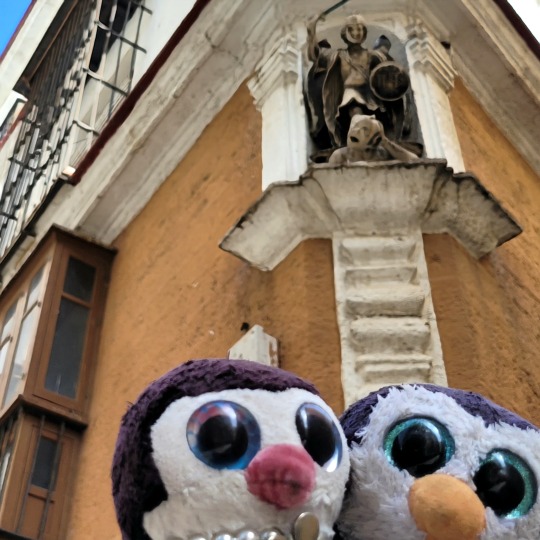

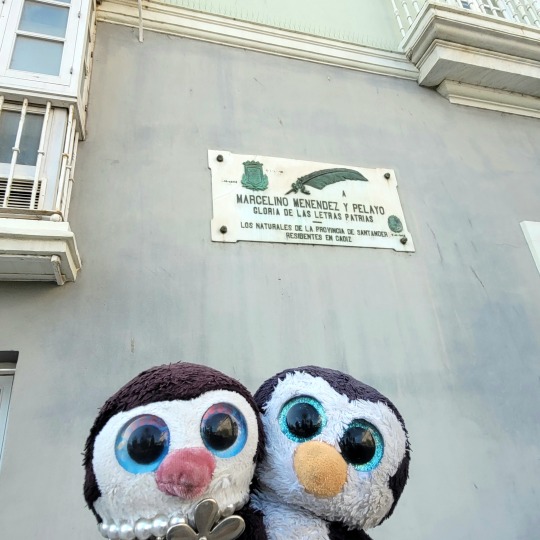


2023/10/14
Empezamos a buscar el camino de vuelta a la estación de tren descubriendo más detalles curiosos dentro del centro histórico. Vimos en una tienda una camiseta dedicada a una banda de primos importantes. Y a la Vírgen del Mar, tan importante para todas las ciudades costeras.
We began to find our way back to the train station, discovering more curious details within the historic center. We saw a t-shirt in a store dedicated to a band of important cousins. And to the Virgin of the Sea, so important for all coastal cities.
Google Translation into French:
Nous avons commencé à retrouver le chemin du retour vers la gare, découvrant des détails plus curieux dans le centre historique. Nous avons vu un t-shirt dans un magasin dédié à une bande de cousins importants. Et à la Vierge de la Mer, si importante pour toutes les villes côtières.
Google translation into Italian:
Abbiamo iniziato a ritrovare la strada verso la stazione, scoprendo altri dettagli curiosi nel centro storico. Abbiamo visto una maglietta in un negozio dedicato a un gruppo di cugini importanti. E alla Vergine del Mare, così importante per tutte le località costiere.
Google Translation into Portuguese:
Começámos a encontrar o caminho de regresso à estação, descobrindo mais detalhes curiosos no centro histórico. Vimos uma camiseta em uma loja dedicada a vários primos importantes. E à Virgem do Mar, tão importante para todas as cidades costeiras.
Google Translation into German:
Wir machten uns auf den Weg zurück zum Bahnhof und entdeckten weitere merkwürdige Details im historischen Zentrum. Wir haben in einem Geschäft ein T-Shirt gesehen, das einer Reihe wichtiger Cousins gewidmet war. Und zur Jungfrau des Meeres, die für alle Küstenstädte so wichtig ist.
Google Translation into Albanisch:
Filluam të gjejmë rrugën për në stacionin e trenit, duke zbuluar më shumë detaje kurioze brenda qendrës historike. Ne pamë një bluzë në një dyqan kushtuar një grupi kushërinjsh të rëndësishëm. Dhe për Virgjëreshën e Detit, kaq e rëndësishme për të gjitha qytetet bregdetare.
Google Translation into Arabic:
بدأنا في العودة إلى محطة القطار، واكتشفنا المزيد من التفاصيل الغريبة داخل المركز التاريخي. لقد رأينا قميصًا في متجر مخصصًا لمجموعة من أبناء العمومة المهمين. وإلى عذراء البحر، وهو أمر مهم جدًا لجميع المدن الساحلية.
Google Translation into Armenian:
Մենք սկսեցինք գտնել մեր ճանապարհը դեպի երկաթուղային կայարան՝ բացահայտելով պատմական կենտրոնում ավելի հետաքրքիր մանրամասներ: Խանութում մենք տեսանք շապիկ, որը նվիրված էր կարևոր զարմիկների խմբին: Իսկ ծովափնյա բոլոր քաղաքների համար այդքան կարևոր ծովի կույսին։
Google Translation into Bengali:
আমরা ঐতিহাসিক কেন্দ্রের মধ্যে আরও কৌতূহলী বিবরণ আবিষ্কার করে ট্রেন স্টেশনে ফিরে যাওয়ার পথ খুঁজে পেতে শুরু করি। আমরা গুরুত্বপূর্ণ কাজিনদের একটি ব্যান্ডের জন্য উত্সর্গীকৃত একটি দোকানে একটি টি-শার্ট দেখেছি। এবং সমুদ্রের ভার্জিন, সমস্ত উপকূলীয় শহরগুলির জন্য এত গুরুত্বপূর্ণ।
Google Translation into Bulgarian:
Започнахме да търсим пътя обратно към гарата, откривайки още любопитни подробности в историческия център. Видяхме тениска в магазин, посветена на група важни братовчеди. И на Богородица на морето, толкова важна за всички крайбрежни градове.
Google Translation into Czech:
Začali jsme hledat cestu zpět na vlakové nádraží a objevovali další kuriózní detaily v historickém centru. Viděli jsme tričko v obchodě věnovaném kapele významných bratranců. A k Mořské Panně, tak důležité pro všechna pobřežní města.
Google Translation into Simplified Chinese:
我们开始寻找返回火车站的路,在历史中心发现更多有趣的细节。 我们在一家商店里看到了一件纪念一群重要表兄弟的 T 恤。 对于海洋处女来说,这对所有沿海城市来说都很重要。
Google Translation into Korean:
우리는 기차역으로 돌아가는 길을 찾기 시작했고, 역사적인 중심지 내에서 더 흥미로운 세부 사항을 발견했습니다. 우리는 중요한 사촌들의 밴드를 위한 티셔츠를 매장에서 보았습니다. 그리고 모든 해안 도시에 매우 중요한 바다의 처녀(Virgin of the Sea) 조각상도 있습니다.
Google Translation into Croatian:
Počeli smo tražiti put natrag do željezničke stanice, otkrivajući još zanimljivih detalja unutar povijesnog središta. U dućanu smo vidjeli majicu posvećenu bendu važnih rođaka. I do skulpture Djevice mora, tako važne za sve obalne gradove.
Google Translation into Danish
Vi begyndte at finde tilbage til togstationen og opdagede flere nysgerrige detaljer i det historiske centrum. Vi så en t-shirt i en butik dedikeret til et band af vigtige fætre. Og til Virgin of the Sea-skulpturen, så vigtig for alle kystbyer.
Google Translation into Slovak:
Začali sme hľadať cestu späť na železničnú stanicu a objavovať ďalšie kuriózne detaily v rámci historického centra. Videli sme tričko v obchode venovanom kapele významných bratrancov. A k soche Morskej Panny, ktorá je taká dôležitá pre všetky pobrežné mestá.
Google Translation into Slovenian:
Začeli smo iskati pot nazaj do železniške postaje in odkrivali več radovednih podrobnosti v zgodovinskem središču. V trgovini smo videli majico, posvečeno skupini pomembnih bratrancev. In do skulpture Device morja, tako pomembne za vsa obalna mesta.
Google Translation into Estonian:
Hakkasime leidma tagasiteed raudteejaama, avastades ajaloolises keskuses rohkem uudishimulikke detaile. Nägime poes t-särki, mis oli pühendatud tähtsatele nõbudele. Ja Mere Neitsi skulptuurile, mis on nii oluline kõigi rannikuäärsete linnade jaoks.
Google Translation into Suomi:
Aloimme löytää tiensä takaisin rautatieasemalle ja löysimme mielenkiintoisempia yksityiskohtia historiallisesta keskustasta. Näimme t-paidan kaupassa, joka oli omistettu tärkeille serkkuille. Ja Neitsyt Meren veistokselle, joka on niin tärkeä kaikille rannikkokaupungeille.
Google Translation into Georgian:
ჩვენ დავიწყეთ რკინიგზის სადგურისკენ დაბრუნების გზა და აღმოვაჩინეთ უფრო საინტერესო დეტალები ისტორიულ ცენტრში. ჩვენ ვნახეთ მაისური მაღაზიაში, რომელიც ეძღვნებოდა მნიშვნელოვანი ბიძაშვილების ჯგუფს. და ზღვის ღვთისმშობლის ქანდაკება, რომელიც ასე მნიშვნელოვანია ყველა სანაპირო ქალაქისთვის.
Google Translation into Greek:
Αρχίσαμε να βρίσκουμε τον δρόμο της επιστροφής στον σιδηροδρομικό σταθμό, ανακαλύπτοντας περισσότερες περίεργες λεπτομέρειες μέσα στο ιστορικό κέντρο. Είδαμε ένα μπλουζάκι σε ένα κατάστημα αφιερωμένο σε μια μπάντα σημαντικών ξαδέρφων. Και στο γλυπτό της Παναγίας της Θάλασσας, τόσο σημαντικό για όλες τις παραθαλάσσιες πόλεις.
Google Translation into Guarani:
Roñepyrũ roheka ore rape jey pe estación de tren-pe, rodescubri hetave detalle curioso pe centro histórico ryepýpe. Rohecha peteĩ camiseta peteĩ tenda oñededikáva peteĩ banda de primo iñimportántevape. Ha pe Virgen del Mar-pe ĝuarã escultura , iñimportantetereíva opa táva costera-pe ĝuarã.
Google Translation into Hawaiian:
Ua hoʻomaka mākou e ʻimi i ko mākou ala e hoʻi ai i ke kahua kaʻaahi, e ʻike i nā kikoʻī hoihoi hou aʻe i loko o ke kikowaena mōʻaukala. Ua ʻike mākou i kahi t-shirt i loko o kahi hale kūʻai i hoʻolaʻa ʻia no kahi hui o nā hoahānau koʻikoʻi. A i ka Virgin of the Sea sculpture , he mea nui no nā kūlanakauhale kahakai a pau.
Google Translation into Hebrew:
התחלנו למצוא את דרכנו חזרה לתחנת הרכבת, וגילינו פרטים מוזרים נוספים בתוך המרכז ההיסטורי. ראינו חולצה בחנות המוקדשת ללהקת בני דודים חשובים. ולפסל בתולת הים, כל כך חשוב עבור כל ערי החוף.
Google Translation into Hindi:
हमने ऐतिहासिक केंद्र के भीतर और अधिक उत्सुक विवरणों की खोज करते हुए, रेलवे स्टेशन पर वापस जाने का रास्ता खोजना शुरू कर दिया। हमने एक स्टोर में महत्वपूर्ण चचेरे भाइयों के एक समूह को समर्पित एक टी-शर्ट देखी। और वर्जिन ऑफ़ द सी मूर्तिकला, सभी तटीय शहरों के लिए बहुत महत्वपूर्ण है।
Google Translation into Hungarian:
Elkezdtünk visszatalálni a vasútállomásra, és további érdekes részleteket fedeztünk fel a történelmi központban. Láttunk egy pólót egy üzletben, amelyet egy fontos unokatestvérek bandájának szenteltek. És a Tengeri Szűz szobor számára, amely olyan fontos minden tengerparti város számára.
Google Translation into Indonesian:
Kami mulai mencari jalan kembali ke stasiun kereta, menemukan lebih banyak detail menarik di pusat bersejarah tersebut. Kami melihat kaos di toko yang didedikasikan untuk sekelompok sepupu penting. Dan untuk patung Perawan Laut, sangat penting untuk semua kota pesisir.
Google Translation into Japanese:
私たちは歴史的中心部でさらに興味深い詳細を発見しながら、駅に戻る道を探し始めました。 私たちは大切ないとこのバンドを記念した T シャツを店��見つけました。 そして、すべての沿岸都市にとって非常に重要な海の聖母の彫刻へ。
Google Translation into Kyrgyz:
Тарыхый борбордун ичиндеги кызык деталдарды таап, кайра темир жол станциясына карай жол таба баштадык. Маанилүү аталаш бир тобуна арналган дүкөндөн футболканы көрдүк. Ал эми деңиз айымынын скульптурасы бардык жээктеги шаарлар үчүн абдан маанилүү.
Google Translation into Latvian:
Mēs sākām atrast ceļu atpakaļ uz dzelzceļa staciju, atklājot vēl ziņkārīgākas detaļas vēsturiskajā centrā. Mēs redzējām T-kreklu veikalā, kas bija veltīts svarīgu brālēnu grupai. Un Jūras Jaunavas skulptūrai, kas ir tik svarīga visām piekrastes pilsētām.
Google Translation into Malayalam:
ചരിത്ര കേന്ദ്രത്തിനുള്ളിൽ കൂടുതൽ കൗതുകകരമായ വിശദാംശങ്ങൾ കണ്ടെത്തി ഞങ്ങൾ റെയിൽവേ സ്റ്റേഷനിലേക്കുള്ള വഴി കണ്ടെത്താൻ തുടങ്ങി. പ്രധാനപ്പെട്ട കസിൻസിന്റെ ഒരു ബാൻഡിന് സമർപ്പിച്ചിരിക്കുന്ന ഒരു ടീ-ഷർട്ട് ഞങ്ങൾ കണ്ടു. കടലിന്റെ കന്യകയുടെ ശിൽപം, എല്ലാ തീരദേശ നഗരങ്ങൾക്കും വളരെ പ്രധാനമാണ്.
Google Translation into Malay:
Kami mula mencari jalan kembali ke stesen kereta api, menemui butiran yang lebih aneh di dalam pusat bersejarah itu. Kami melihat t-shirt di kedai yang didedikasikan untuk sekumpulan sepupu penting. Dan kepada Virgin of the Sea arca, sangat penting untuk semua bandar pantai.
Google Translation into Malagasy:
Nanomboka nitady ny lalanay niverina tany amin'ny gara izahay, nahita tsipiriany mahaliana kokoa tao anatin'ilay foibe manan-tantara. Nahita t-shirt iray izahay tao amin'ny fivarotana iray natokana ho an'ny andian-drahalahy manan-danja. Ary ny sary sokitra Virjiny amin'ny ranomasina, tena zava-dehibe ho an'ny tanàna amorontsiraka rehetra.
Google Translation into Mongolian:
Бид галт тэрэгний буудал руу буцах замаа хайж, түүхэн төвөөс илүү сонирхолтой зүйлсийг олж мэдсэн. Бид дэлгүүрт чухал үеэлүүдийн хамтлагт зориулсан футболк харав. Далайн онгон охины баримал нь бүх эргийн хотуудад маш чухал юм.
Google Translation into Dutch:
We begonnen de weg terug naar het treinstation te vinden en ontdekten meer merkwaardige details in het historische centrum. We zagen een T-shirt in een winkel gewijd aan een groep belangrijke neven. En aan het beeld van de Maagd van de Zee, zo belangrijk voor alle kuststeden.
Google Translation into Nepali:
हामीले ऐतिहासिक केन्द्र भित्र थप जिज्ञासु विवरणहरू खोज्दै रेल स्टेसनमा फर्कने बाटो खोज्न थाल्यौं। हामीले महत्त्वपूर्ण चचेरे भाईहरूको ब्यान्डलाई समर्पित एउटा स्टोरमा टी-शर्ट देख्यौं। र समुद्र मूर्तिकला को भर्जिन को लागी, सबै तटीय शहरहरु को लागी धेरै महत्त्वपूर्ण छ।
Google Translation into Norwegian:
Vi begynte å finne tilbake til jernbanestasjonen, og oppdaget flere nysgjerrige detaljer i det historiske sentrum. Vi så en t-skjorte i en butikk dedikert til et band med viktige kusiner. Og til Virgin of the Sea-skulpturen, så viktig for alle kystbyer.
Google Translation into Panjabi:
ਅਸੀਂ ਇਤਿਹਾਸਕ ਕੇਂਦਰ ਦੇ ਅੰਦਰ ਹੋਰ ਦਿਲਚਸਪ ਵੇਰਵਿਆਂ ਦੀ ਖੋਜ ਕਰਦੇ ਹੋਏ, ਰੇਲ ਸਟੇਸ਼ਨ ਵੱਲ ਵਾਪਸ ਜਾਣ ਦਾ ਰਸਤਾ ਲੱਭਣਾ ਸ਼ੁਰੂ ਕੀਤਾ। ਅਸੀਂ ਮਹੱਤਵਪੂਰਨ ਚਚੇਰੇ ਭਰਾਵਾਂ ਦੇ ਇੱਕ ਸਮੂਹ ਨੂੰ ਸਮਰਪਿਤ ਇੱਕ ਸਟੋਰ ਵਿੱਚ ਇੱਕ ਟੀ-ਸ਼ਰਟ ਦੇਖੀ। ਅਤੇ ਸਮੁੰਦਰੀ ਮੂਰਤੀ ਦੀ ਵਰਜਿਨ ਲਈ, ਸਾਰੇ ਤੱਟਵਰਤੀ ਸ਼ਹਿਰਾਂ ਲਈ ਬਹੁਤ ਮਹੱਤਵਪੂਰਨ ਹੈ।
Google Translation into Pashtun:
موږ د اورګاډي سټیشن ته د بیرته راستنیدو لاره موندلو پیل وکړ ، په تاریخي مرکز کې نور په زړه پوري توضیحات مو وموندل. موږ په یوه پلورنځي کې یو ټی شرټ ولید چې د مهم تره زامنو یوې ډلې ته وقف شوی و. او د سمندر مجسمې ته، د ټولو ساحلي ښارونو لپاره خورا مهم دی.
Google Translation into Persian:
ما شروع به یافتن راه بازگشت به ایستگاه قطار کردیم و جزئیات عجیب تری را در مرکز تاریخی کشف کردیم. ما یک تی شرت را در فروشگاهی دیدیم که به گروهی از پسرعموهای مهم اختصاص داشت. و مجسمه ویرجین دریا که برای همه شهرهای ساحلی بسیار مهم است.
Google Translation into Polish:
Zaczęliśmy szukać drogi powrotnej na dworzec kolejowy, odkrywając coraz więcej ciekawych szczegółów w historycznym centrum. W sklepie widzieliśmy koszulkę poświęconą grupie ważnych kuzynów. I do rzeźby Matki Boskiej Morskiej, tak ważnej dla wszystkich nadmorskich miast.
Google Translation into Romanian:
Am început să ne găsim drumul înapoi spre gară, descoperind mai multe detalii curioase în centrul istoric. Am văzut un tricou într-un magazin dedicat unei trupe de veri importanți. Și sculptura Fecioarei Mării, atât de importantă pentru toate orașele de coastă.
Google Translation into Russian:
Мы начали возвращаться к вокзалу, обнаруживая еще больше любопытных подробностей в историческом центре. В магазине мы увидели футболку, посвященную группе важных кузенов. И скульптуре Богородицы Морской, столь важной для всех приморских городов.
Google Translation into Serbian:
Почели смо да проналазимо пут назад до железничке станице, откривајући више радозналих детаља унутар историјског центра. Видели смо мајицу у продавници посвећеној групи важних рођака. И скулптури Богородице, тако важној за све приморске градове.
Google Translation into Swedish:
Vi började hitta tillbaka till tågstationen och upptäckte fler märkliga detaljer i den historiska stadskärnan. Vi såg en t-shirt i en butik tillägnad ett gäng viktiga kusiner. Och till Virgin of the Sea-skulpturen, så viktig för alla kuststäder.
Google Translation into Sundanese:
Urang mimiti neangan jalan deui ka stasiun karéta, manggihan rinci leuwih panasaran dina puseur bersejarah. Urang nempo hiji kaos oblong di toko dedicated ka band of cousins penting. Sareng patung Virgin of the Sea, penting pisan pikeun sadaya kota basisir.
Google Translation into Tagalog:
Nagsimula kaming hanapin ang aming daan pabalik sa istasyon ng tren, na natuklasan ang mga mas kakaibang detalye sa loob ng sentrong pangkasaysayan. May nakita kaming t-shirt sa isang tindahan na nakatuon sa isang banda ng mahahalagang pinsan. At sa iskultura ng Birhen ng Dagat, napakahalaga para sa lahat ng mga lungsod sa baybayin.
Google Translation into Thai:
เราเริ่มหาทางกลับไปยังสถานีรถไฟ และค้นพบรายละเอียดที่น่าสงสัยมากขึ้นภายในศูนย์กลางประวัติศาสตร์ เราเห็นเสื้อยืดในร้านที่อุทิศให้กับวงดนตรีลูกพี่ลูกน้องคนสำคัญ และสำหรับรูปปั้น Virgin of the Sea ซึ่งมีความสำคัญมากสำหรับเมืองชายฝั่งทั้งหมด
Google Translation into Telugu:
చారిత్రాత్మక కేంద్రంలో మరిన్ని ఆసక్తికరమైన వివరాలను కనుగొనడం ద్వారా మేము రైలు స్టేషన్కు తిరిగి వెళ్లడం ప్రారంభించాము. మేము ముఖ్యమైన బంధువుల బృందానికి అంకితమైన దుకాణంలో టీ-షర్టును చూశాము. మరియు వర్జిన్ ఆఫ్ ది సీ శిల్పం , అన్ని తీర నగరాలకు చాలా ముఖ్యమైనది.
Google Translation into Turkish:
Tarihi merkezde daha ilginç detayları keşfederek tren istasyonuna geri dönüş yolunu bulmaya başladık. Bir mağazada önemli kuzenlerden oluşan bir gruba adanmış bir tişört gördük. Ve Denizin Bakiresi heykeli, tüm kıyı kentleri için çok önemlidir.
Google Translation into Ukrainian:
Ми почали шукати дорогу назад до вокзалу, відкриваючи більше цікавих деталей в історичному центрі. Ми побачили в магазині футболку, присвячену групі важливих двоюрідних братів. І до скульптури Діви Морської, такої важливої для всіх прибережних міст.
Google Translation into Urdu:
تاریخی مرکز کے اندر مزید دلچسپ تفصیلات دریافت کرتے ہوئے ہم نے ٹرین اسٹیشن کی طرف واپسی کا راستہ تلاش کرنا شروع کیا۔ ہم نے ایک اسٹور میں ایک ٹی شرٹ دیکھی جو اہم کزنز کے بینڈ کے لیے وقف تھی۔ اور سمندر کی ورجن مجسمہ، تمام ساحلی شہروں کے لیے بہت اہم ہے۔
Google Translation into Uzbek:
Biz tarixiy markazda qiziqroq tafsilotlarni kashf qilib, vokzalga qaytishni boshladik. Biz do'konda muhim qarindoshlar guruhiga bag'ishlangan futbolkani ko'rdik. Va dengiz bokirasining haykali barcha qirg'oq shaharlari uchun juda muhimdir.
Google Translation into Vietnamese:
Chúng tôi bắt đầu tìm đường trở lại ga xe lửa, khám phá thêm nhiều chi tiết gây tò mò bên trong trung tâm lịch sử. Chúng tôi nhìn thấy một chiếc áo phông trong một cửa hàng dành riêng cho một nhóm anh em họ quan trọng. Và tác phẩm điêu khắc Đức Trinh Nữ Biển, rất quan trọng đối với tất cả các thành phố ven biển.
#Cadiz#España#Spain#TacitaDePlata#Walk#DownTown#Penguin#Blinders#Tribute#Sculpture#VirginOfTheSea#PolloNegroSkyWalker#TravelBlogger#Wanderlust#CoupleGoals#GoodVibes#Plushies#instaGood#Maharashtra#ペンギン
7 notes
·
View notes
Text
every so often we have the cleaners come over because it is a big house with two very ADHD adults living in it. they are almost always Brazilian, and come in pairs. one girl has been Our Girl for like, five years--before we moved into this house, even. we are a weird house but we're nice and we tip well so I think--emphasis on think--that she is cool with us/our house.
her partner has changed out a few times. for September and October this year, there was a new girl. most cleaners are indifferent to the weird shit you (general you) (but also specifically me) have up in your house--they've seen worse.
but it was over the Cyprianic holy days, you see, and St. Cyprian--patron saint of mages and necromancers and so on--is well known in Brazil. famous? infamous? depends on where you stand.
cheerfully my beloved once said, "it would be less weird in here if it was just the skeletons and shit. but the saints? that's occult, not just goth girl."
so I mentioned the Cyprianic holy days, right? and you guys know my ODDLY HUGE MANTLE? my oddly huge mantle, decked out, for the month of September, in various obviously occult items, bones, skulls, dried chicken feet, candles, and of course, an icon of the the sorcerer saint himself?
so new girl came into our house and politely said hello and then walked a bit more into the house and obviously saw the mantle etc and obviously recognized some of the shit on there, because she just stopped and looked and looked. it was not a look of solidarity or homecoming, so I said something like, "yeah! bye!" and slipped out the door, as one does, because sometimes you decide it's not really a problem, exactly, but you're going to run away now.
later on I realized I also left my copy of The Book of St. Cyprian with the title in Portuguese on the table right next to the mantle.
the book of St. Cyprian, of course, has so much lore surrounding it that it is in and of itself an entity. but also if you ask some religious but not occultist types about it, owning a copy pretty much means the owner is in league with the devil. the book itself is--according to some--evil and dangerous.
anyway, this girl was always super polite and nice! and professional! but I do not think she especially wanted to be here, which is, imo, totally fair. if my mantle made her uncomfortable, I imagine my study was far worse for her.
but so--
today there was a NEW new girl (my age this time or older) and through the language barrier she complimented my plants, so I gave her a pothos rambling out of a big mason jar. but she also pointed to my Abre Camino and said something like, "THIS plant! In Brazil, important!" and I was like, yeah! Important!
is this plant person solidarity or tropical climate solidarity or occultist solidarity? like she also saw the full size house skeleton but also the various Oshun / Oxum / caridad del cobre depictions in the study, so like. are we cool? I hope we're cool.
10 notes
·
View notes
Text
Do u really want what u want?
A lot of decisions you think that are yours, maybe are actually made by your subconscious. They tend to repeat themselves, and there's actually a name for this. In Psychology, this is called "Effect of Mere Exposure", and it's basically the base for every propaganda. The more you see something, the more you unconsciously want to choose this thing over the others. Neuroscience says that our brain does this to economize energy. It makes sense, there's no point of thinking about A, if B is guaranteed. The problem of this Brain economy, is that it isn't limited to small choices. Actually, it affects your entire life. Know that sensation, "I'm sad, but I don't know how to explain why"? So, it's born from this cognitive dissonance. The difference between what you think you want, from what you really want.
Because that's the point, you can't totally hand your life over to your subconscious. Because when faced with difficult choices, it will always choose the more familiar path. This can lead to lots of frustrations.
Like, for example: Returning to a relationship, which is no longer so good.
Talk to that person again, even if they have already done you a lot of harm or still do.
Or even say that you're obliged to follow a path to the end, when you're not.
Portuguese 👇
Você realmente quer o que você quer?
Muitas decisões que você acha que são suas, talvez sejam na verdade feitas pelo seu subconsciente. Elas tendem a se repetir, e na verdade há um nome para isso. Em Psicologia, isso se chama "Efeito da Mera Exposição", e é basicamente a base de toda propaganda. Quanto mais você vê algo, mais inconscientemente deseja escolher essa coisa em detrimento das outras. A neurociência diz que nosso cérebro faz isso para economizar energia. Faz sentido, não adianta pensar em A, se B é garantido. O problema dessa economia cerebral é que ela não se limita a pequenas escolhas. Na verdade, afeta toda a sua vida. Conhece aquela sensação: "Estou triste, mas não sei explicar o porquê"? Então, nasce dessa dissonância cognitiva. A diferença entre o que você pensa que quer, do que você realmente quer.
Porque esse é o ponto, você não pode entregar totalmente sua vida ao seu subconsciente. Porque diante de escolhas difíceis, ele sempre escolherá o caminho mais familiar. Isso pode levar a muita frustração.
Como, por exemplo: Voltar a um relacionamento, que já não está tão bom.
Converse com aquela pessoa novamente, mesmo que ela já tenha te feito muito mal ou ainda te faça.
Ou ainda dizer que é obrigado a seguir um caminho até o fim, quando não é.
Spanish 👇
¿De verdad quieres lo que quieres?
Muchas decisiones que crees que son tuyas en realidad pueden ser tomadas por tu mente subconsciente. Tienden a repetirse, y en realidad hay un nombre para eso. En Psicología, esto se llama el "Efecto de la mera exposición", y es básicamente la base de toda publicidad. Cuanto más ves algo, más inconscientemente quieres elegir esa cosa sobre otras. La neurociencia dice que nuestro cerebro hace esto para conservar energía. Tiene sentido, no sirve de nada pensar en A, si B está garantizado. El problema con esta economía del cerebro es que no se limita a pequeñas elecciones. De hecho, afecta toda tu vida. ¿Conoces ese sentimiento, "Estoy triste, pero no puedo explicar por qué"? Entonces, nace de esta disonancia cognitiva. La diferencia entre lo que crees que quieres y lo que realmente quieres.
Porque ese es el punto, no puedes entregar completamente tu vida a tu subconsciente. Porque cuando se enfrenta a decisiones difíciles, siempre elegirá el camino más familiar. Esto puede generar mucha frustración.
Como, por ejemplo: Volver a una relación, que ya no es tan buena.
Habla de nuevo con esa persona, aunque ya te haya hecho mucho daño o te siga haciendo.
O incluso decir que estás obligado a seguir un camino hasta el final, cuando no lo estás.
More about it: English // Portuguese // Spanish
#neuroscience#neuroperson#psychology#actually neuroscience#neurothings#our brain#Effect Of Mere Exposure
16 notes
·
View notes
Text
Hello!
This is just a heads-up to myself and for the few who reads my stuff: for the month of May I will temporarily change this platform to a “travel blog”.
I’m picking up the El Camino Portuguese where I left it 2 years ago, in Coimbra.
If everything goes down smoothly, it’ll take around 3 weeks to reach Santiago de Compostela. During those weeks I will try to post photos and thoughts (if any occurs 😅), maybe poems (if the fancy takes me) every once in a while.
If you’re interested in that sort of stuff, you are welcome to follow my journey! 😊
Izgalom
Sétálni viszem
Minden gondolatomat
El Camino vár
Anticipation
I take myself for
a walk with all my worries
El Camino waits.
2 notes
·
View notes
Text
Mudra en las Artes Marciales
Una de las cosas más curiosas que encontré en mi entrenamiento en artes marciales fue el uso de mudra en artes combativas. Mudra (en japones: in) para aquellos que no están familiarizados con el tema, son esos extraños gestos hechos con las manos derivados del budismo esotérico (mikkyo), particularmente las sectas Tendai y Shingon.
Se supone que estos gestos generan enfoque y potencia espiritual los cuales son manifestados externamente de alguna manera.
Desafortunadamente para la mayor parte de los artistas marciales en el budo moderno (sendas marciales) mudra no es parte del entrenamiento.
Mayormente el budo “moderno” está basado de alguna forma en conceptos modernos de educación física y entrenamiento deportivo y no incluye, a menos que un maestro en particular sea el/ella misma adherente de alguna secta Budista, el uso de rituales esotéricos Budistas como mudra, mantra (recitados de palabras de poder) y mandala (inscripciones, pinturas o patrones que pueden crear energía espiritual).
De este modo mudra esta ausente, en general, en judo, kendo, iaido, kyudo, karatedo y aun aikido tal como se formula actualmente.
Ueshiba Morihei, el fundador de aikido, fue devoto de una secta Shinto llamada Omoto-kyo, la cual hacia uso de algunos rituales inusuales, incluyendo el uso de chinkon y kotodama y varios ejercicios corporales para generar poder espiritual, pero generalmente, en mi opinión, la mayoría de la naturaleza esotérica del aikido remite a Omoto-kyo y a los rituales esotéricos Shinto.
Aunque el Budismo esotérico y otras sectas como Zen comparten las mismas metas, la cuestión de la salvación del alma, sus caminos para lograrlo difieren un poco.
Mikkyo hace mayor uso de rituales y ritos que remiten a fuentes de origen tántrico, de las que se dice anteceden al Budismo en si, y podrían aún ser tan antiguas como los ritos mágicos chamanistas prehistóricos de Asia, tal como se encuentran en la India, Tibet, China, Mongolia y Japón..
Zen disminuye la importancia de esos ritos arcanos, y en su lugar se enfoca en el intelecto, en la experiencia directa, en el vaciado de la mente de preferencia sobre el llenado de la mente.
Reconozco que este es un esquema muy simplista que no le hace mucha justicia a mikkyo ni a Zen, pero es lo más que puedo simplificar las diferencias en estas pocas paginas.
(Nadie se enoje pensando que estoy tomando parte, prefiero ser abierto de mente acerca de todas las sectas; mi familia fue originalmente Soto Zen pero mis padres me enviaron a Hongwanji y Jodo Shinshu a aprender Japonés-- lo cual no funcionó.
Pero ellos también permitían a los misioneros Cristianos predicar a los chicos del barrio en nuestro patio trasero, asistí a la escuela de verano Bautista en una oportunidad y mis amigos Filipinos y Portugueses también me hablaron de la iglesia Católica un par de veces. Así que estoy realmente empapado en el tema).
En todo caso, tuve conocimiento del uso de mudra en koryu (“antiguas” artes marciales) desde la vez que tuve una conversación privada con el maestro de entrenamiento de Tenshin Shoden Katori Shinto Ryu, Otake Risuke, y posteriormente Donn F. Draeger.
Otake Sensei describió algunos mudras usados en su escuela, la cual es una de las antiguas existentes en Kanto Japan (Japón del Este).
Para nosotros, los artistas marciales involucrados en el koryu, el uso de mudra a veces explica algunos movimientos singulares en medio de un kata que no podemos comprender lógicamente como siendo necesarios en una particular técnica de combate.
En el caso de Katori Shinto Ryu, Otake Sensei respondió a una pregunta que tenia alguien de nuestro publico acerca de un kata con naginata en el cual la empuñadura apuntaba a la palma abierta del espadachín.
Nosotros pensábamos que si la distancia fuera mas corta se habría cortado la mano, entonces porque introducir una apertura innecesaria...?
Porque, dijo Otake Sensei, en esa palma, tal persona ha dibujado con un pase de sus dedos un signo secreto mikkyo para resguardarse de los malos espíritus y luego dirige esa fuerza al atacante.
Por supuesto, siendo los samurais guerreros de mente practica, hacían eso a una distancia tal que, si la magia no funcionaba, su mano no fuese amputada en el proceso.
Otake Sensei también describió otros rituales derivados de mikkyo que su sistema empleaba antes de la batalla y aun separados de las artes marciales en general, tal como rituales para curar gente con varios alimentos y así siguiendo.
Algunos años mas tarde, cuando estaba entrenando en Takeuchi Ryu mi propio sensei me informo que debía colocar mis dedos de cierta manera cuando retornaba la espada a su vaina.
Pensé que esto era simplemente una afectación de nuestro propio estilo, pero él luego me dijo que yo estaba secretamente realizando un mudra con mis dedos para finalizar el combate, para resguardar de los malos espíritus y ofrecer una plegaria a los muertos.
“Aún si el atacante era tu enemigo, una vez muerto, se transforma en Buda, así que deberías rezar por su iluminación”, dijo mi sensei.
“Esta es la compasión del guerrero. Una batalla es una batalla, así que tenes que matarlo, pero después reza por su espíritu. Este es el espíritu de ser un bugeisha”.
El uso de mudras y otros aspectos de mikkyo se encuentran en muchas ocasiones y koryu, porque mikkyo y Shinto fueron las religiones de los samurai que fundaron las ryu que fueron creadas antes del 1600.
Subsecuentemente las ryu desarrolladas después de la imposición del gobierno de Tokugawa fueron fuertemente influidas por el Neo-Confucianismo y mas tarde por el Budismo Zen.
Si bien Zen fue popularizado cuando la guerra de clases en el periodo Kamakura, en el 1300, esto no afectó en gran medida a las artes marciales hasta finales del Período Edo, con los escritos de los sacerdotes Zen Takuan y Hakuin. Y a la par de esto en el Período Edo (1600 – 1868) las artes marciales fueron igualmente influidas por el Neo-Confucianismo y también, en su ultimo tramo, por el Shinto místico
Cuando Japón se modernizó, los derivados modernos de las artes marciales, las formas -do, necesitaron bases espirituales que no fueran tan particularizadas o esotéricas como mikkyo, entonces Zen se volvió aún mas ampliamente adoptado porque muchas de sus practicas y filosofías, como zazen, podían ser tomadas fuera de contexto y usadas como parte de un régimen de entrenamiento sin tener el practicante que volverse necesariamente en un devoto del Budismo Zen.
Budo, con las bases Zen, podría por ende transformarse en un pasatiempo nacional e internacional sin necesidad de una filiación religiosa.
Lo mismo, de alguna forma, puede decirse de koryu; uno no necesariamente tiene que ser un miembro registrado de una organización religiosa en particular. Pero requiere una cierta suspensión de las creencias, o en ultima instancia, una aceptación de diferentes formas de comprender el universo espiritual por parte de los no-Budistas.
Puede usted ser un Cristiano devoto y aun así practicar un koryu influido por mikkyo...?
Tengo amigos que lo hacen y no tienen mucho conflicto con ello, pero ellos son lo que llamaría Cristianos “generales” que pertenecen a las sectas principales, como el Protestantismo.
Pueden aceptar la posibilidad de que los rituales que ejecutan en las prácticas no son parte de las creencias de la iglesia Cristiana ortodoxa, pero tampoco son un instrumento del Diablo.
Mikkyo puede, en sus mentes, ser otra expresión de una creencia universal en un mundo espiritual (Aún los sacerdotes Jesuitas, cuando estuve viviendo en Kyoto, visitaban Daitokuji, un templo Budista Zen, para aprender zazen como otra vía de alcanzar una comprensión de Dios)
Si, sin embargo, eres un fundamentalista y no puedes aceptar una diferente interpretación de Dios cultural o religiosa, vas a tener dificultades contrastando tus creencias con el uso de mudra y otras creencias y practicas mikkyo en koryu, y tal vez esas artes marciales no son para ti.
Y si alguno de ustedes ha visto esas películas de Star Wars, comprenderán que con que clase de poder puede la meditación mikkyo dotar a un samurai.
En el reciente film “La Amenaza Fantasma”, los Caballeros Jedi se supone que son capaces de percibir los pensamientos de otras personas, visualizar el futuro, tener un sexto sentido de lo que los rodea, influir en las personas por medio de la palabra, o hacer un gesto y controlar una fuerza invisible que puede enviar objetos volando por el aire.
No puedo decir que haya visto una manifestación real de esa clase de poderes en mi mismo excepto en mis sueños, sin embargo he oído algunas de las mas extraordinarias historias, de varias fuentes comúnmente muy confiables, acerca de poderes muy, muy inexplicables manejados por maestros de artes marciales en Asia.
Naturalmente, estos maestros no son los que vas a encontrar en el ultimo ejemplar de “Revista Kuh-Rottee-Kick-Boxing-Kung-Fu Asesino y Lucha Profesional”.
Ellos por lo general evitan tal tipo de publicidad engañosa y continúan manteniéndose de alguna manera en las sombras.
Mikkyo usa mudra muy a menudo en combinación con varios rituales, salmodias y así siguiendo.
Un mudra común es ese de la “mano cuchillo” o shuto.
Los primeros dos dedos son extendidos mientras el pulgar y otros dedos están cerrados.
Si miras de cerca podes ver este movimiento astutamente oculto en algunos katas koryu, especialmente en las escuelas antiguas como la Tenshin Shoden Katori Shinto-ryu, o en estatuas del Buda divino.
Esto representa la espada de iluminación, la cual corta cualquier ilusión A veces las puntas de los dedos extendidos están agarrados en el puño de la otra mano. Hay un significado simbólico para esto, derivado de mikkyo.
Otro mudra común es el kuji no in, o los signos de nueve manos usados conjuntamente con nueve palabras de poder que generan fuerza espiritual para el usuario. Las nueve manos impulsan una serie de nueve gestos, al mismo tiempo que gritas nueve palabras derivadas de Sanskrit (bonji).
Antes que ver un sacerdote mikkyo o un practicante de koryu ejecutar un mudra podrías llegar a ver esto en una película pochoclera Japonesa de ninjas o algo así, porque en la cultura popular, los ninjas fueron magos para el ojo de la gente común
Hay historias, aun en los tiempos modernos históricamente, de algunos adeptos que podrían gritar (kiai), y voltear pájaros en vuelo.
También el místico maestro de kiaijutsu podía gritar nuevamente y despertar a los pájaros de su estupor.
Ueshiba, se dice, podía confundir a sus atacantes, literalmente desapareciendo de su vista usando su energía ki.
Los maestros de tai chi chuan se supone son capaces de repeler ataques con su energía espiritual chi.
Mudra, como esos poderes fantásticos, se encuentran en muchos koryu como parte de su naturaleza esotérica
Así es porque, también, me sobresalto cuando veo estudiantes de karate en un torneo gritando un “ki-yah” sin sentido o alguna clase de grito desagradable que han inventado por su cuenta.
Un kiai es diferente de un kakegoe. Un kakegoe es un simple grito. Un kiai es un grito, dalo por seguro, pero su antiguo significado es “combatir con (-ai)” “la energía espiritual del otro (ki-)”.
Cada ryu, por lo tanto, tiene un kiai especial que significa su propio estilo en el uso de la energía espiritual expresado en una explosión vocal, o kiai.
Había solamente sonidos específicos, tales como “ei”, “to”, “yah”, o cosas así, que tenían cierto significado marcial en el mikkyo esotérico, el cual fue empleado en koryu.
Kiai, por lo tanto, era más como un mantra secreto para el koryu; palabras especiales de poder que no deberían ser utilizadas a la ligera.
Cuando hiciste un kiai, estuviste atacando directamente el espíritu de tu oponente con palabras de poder que podrían literalmente sacudirlos hasta derrotarlo.
El kiai “yah”, por ejemplo, pronunciado de una cierta manera, representaba la fuerza de una flecha lanzada (en Japones: ya). Se suponía que tu voz penetraría el espíritu de una persona como una flecha. Los otros kiai tenían otros significados y fueron usados en movimientos específicos
Desde temprano note que los budo modernos han sido privados de mudra y otros elementos esotéricos
Pero actualmente no estoy tan seguro que estén completamente desprovistos de influencia mikkyo.
Miren el kata de karate Kusandu (Kokosun). El movimiento de apertura me ha sido descrito a veces como un ejemplo estilizado de como deshacer un apretón y golpear al oponente en los riñones cuando trata de hacerte un abrazo-de-oso.
Pero en el Shinto esotérico, un movimiento similar, con una palmada, da la bienvenida a la divinidad del Sol. Haciendo este movimiento en la dirección del sol naciente absorbes la energía espiritual positiva del sol.
Es posible que hayan otros mudras y movimientos esotéricos ocultos en otras kata de karate? El karate de Okinawa, después de todo, es derivado de la antigua danza y rituales cortesanos de Okinawa, los cuales en si mismos incorporaban algunos aspectos de las creencias folclóricas Okinawenses.
No estoy seguro y no tengo evidencias de que este ejemplo o cualquier otro signifique algo realmente.
Te lo dejo a ti, lector, que le encuentres la solución
De todas formas, estoy divagando.
Mas allá de los ejemplos básicos que describí arriba no creo que sea apropiado para nadie que no sepa realmente lo que esta haciendo que juegue con ellos.
Deberías aprender de un instructor apropiado, un sacerdote Budista, o algo así, y no de un sitio web o página como esta.
Y la eficacia también depende de cuanto creas o no realmente que esto funciona.
Y ya que estamos , si mudra realmente funciona, debería ser como darle un arma cargada a un bebe.
Después de todo, no fue llamado mikkyo (“enseñanza secreta”) por nada.
Algunos de estos métodos fueron considerados muy peligrosos para que los aprenda cualquier tonto.
Y si en realidad no funcionan porque son solamente tradiciones supersticiosas, muy a la postre,algún idiota va a apropiarse de esas técnicass y comenzara a hacer su propia mescolanza de mudras esotéricos para sus clases de karate-kung-fu-jujutsu.
Hay un peligro aquí para cualquiera que tome esas técnicas y luego invente su propio koryu “instantáneo”.
No obstante mi maestro fue muy abierto acerca de impartir algunos métodos esotéricos en mi ryu, tuve una conversación con un sacerdote Shingon sobre el abuso de la religión y los ritos religiosos en la sociedad de hoy.
He notado que si por casualidad dichos rituales verdaderamente tienen significado espiritual, entonces quien abuse de ellos provocara que energías verdaderamente negativas se acumulen en torno a el.
Las energías negativas pueden no manifestarse por si mismas como en las películas de terror, en las que aparece un monstruo del espacio exterior.
Pero a la postre, las acciones fraudulentas de una persona eventualmente irán a su casa a descansar y lo afectaran en proporción al mal que ha cometido.
El karma tiene una forma de enredarte seas Budista o no. En Cristianismo lo llamamos retribución divina.
En cualquier caso, aun cuando practiques solamente un budo moderno, deberías tener en mente que muchos de los rituales y practicas derivan de otras formas y movimientos esotéricos mas antiguos.
Siendo este el caso, el budo moderno es, por lo tanto, mas que solo golpes y patadas, o ver quien puede derrotar a quien.
Aun con un fundamento científico y practico, las elevadas metas del budo fueron desarrollar un individuo mas humano, no necesariamente un mejor combatiente.
Sus orígenes parten de una verdadera visión espiritual, religiosa del mundo en el cual tanto la dirección en la que camines, los pasos que des, la forma en la que pones tus dedos y manos, pueden crear una alteración en la fabrica del universo espiritual.
Eso es una verdadera responsabilidad, no te parece...?
Fuente:
(Material proporcionado por Alegre Sensei. Traducido al español por Flavio Heredia.)
http://culturamarcial.net/blog/103-mudra-en-las-artes-marciales

21 notes
·
View notes
Text
Day 34 - Cacabelos to Trabadelo
Our phones are showing 14+ miles today with a 450m hill climbed.
We’ve got the get out down to pat now, we woke about 20 to 7 and were out by 10 past. There were 4 women in the dorm but the lady opposite was snoring really loudly. I think I must be getting used to it now as I slept quite well.
We stopped for breakfast in Cacabelos before we left as it was going to be quite a trek before our first stop.
The view from the bridge going out of town was very pretty. The path initially followed the road uphill and every now and then we’d look back on a lovely view.

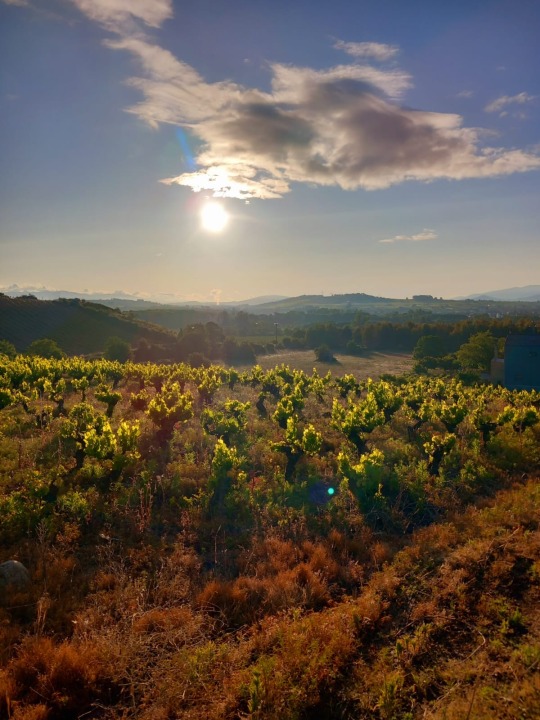
We soon left the road and wandered back into wine country with people tending their vines and driving their tractors on the dirt tracks.

The views over to the mountains were really lovely and we passed through an old village with another couple of doer-uppers for Jane to tackle.

Eventually we arrived in Villafranca Del Bierzo, a sizeable interesting looking town with an impressive castle.
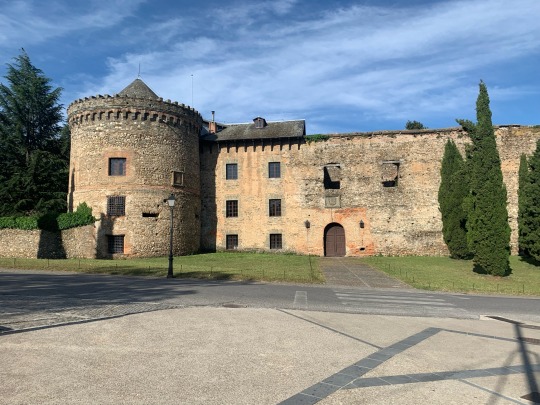
We stopped for a while for coffee then wandered on. On the other side of the river bridge was an option for a diversion up a hill. It would only add a couple of kms but I didn’t think it was such a great idea with Jane’s ankle. However, she wanted to test it out on a proper hill so up we went.

It was so nice to be away from the road and also to find out that our hill legs hadn’t deserted us. I think I worked out it was a 450m ish climb. We initially went up through scrub and trees and eventually ended up in a very fragrant pine forest. The views from the top were tremendous.

There were no facilities so we stopped at the top of a big climb for a drink and some snacks we had brought with us. We kept crossing over with a Portuguese man who we found out later had accidentally taken the mountain route!
After over 6 miles we approached a village, Pradela, serenaded by the sounds of cow bells. To our upmost joy and relief the cafe/Albergue was open. They made us fresh lemonade with real lemons, a cheese and tomato baguette, and home made walnut cake, and boy did it go down well.
There was only 3 kms to our final stop but it was all downhill, and quite a steep downhill at that. Luckily the path wasn’t stony and was straightforward to walk, if carefully.
We got to Casa Susi, our Albergue, not long after 3. We could do a whole blog on just this place. The couple who run it are an Australian women who bought the place in 2016 I think, and her Spanish husband who walked in as a Pilgrim and who never left! There are only 10 beds which are all in what would have been the cow shed. The gardens are lovely with a hammock and a cottage garden where they grow their own veg. A path leads down to the river where I had a paddle. Unfortunately a road runs over the river.

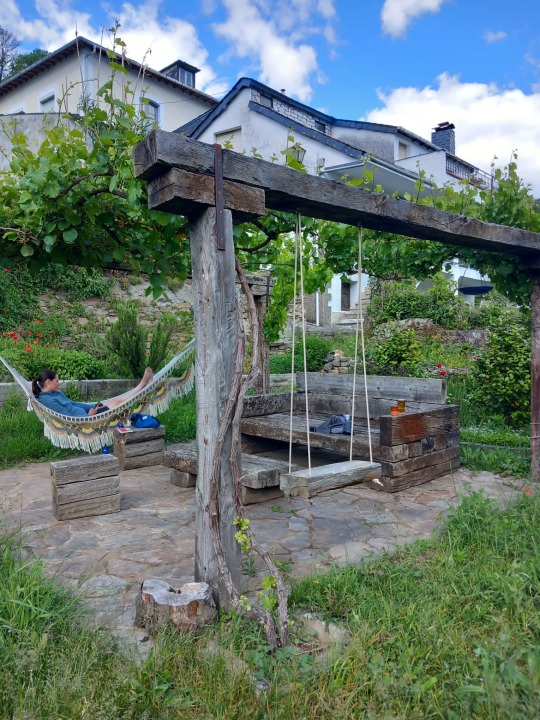
We all had the evening meal together, hosts included. They started by telling us their story, then we had to go around the table introducing ourselves and saying a bit about our Camino experiences so far. Dinner was vegetarian, wild garlic pesto and pasta, a white bean stew with veg, and home made tiramisu washed down with the local organic wine.

We’re all now settling for bed. Jane and I have a really short day tomorrow, just 10kms, as we’re meeting up with Nicole and the Texans for Nicole’s birthday.
10 notes
·
View notes
Note
are you researching about pinochet's dictatorship in general, or a specific topic? It makes me sad but I'm thinking about also researching about it
Hi anon! I'm doing my thesis on Retablo de Yumbel, a play by Isidora Aguirre that talks about the Laja Massacre on 1973 under Pinochet's dictatorship. Sadly most of my sources are in Spanish, but the Rememberance and Human Rights Museum in Chile has an english page with first hand testimony and research on the topic from the 60s to present time.
If you want sources as in books, I can recommend Gabriel Salazar's books on the more historical side. But I am a literature major, and the topics that I have a special interest in are the remembrance and narratives around it, so my recommendations go more by that side
In books that are more "tellings" or fictions "Tengo miedo, Torero" (I'm afraid, my bullfighter) by Pedro Lemebel not only sheds light on the dictatorship by itself, but also on queer issues. Isabel Allende's "House of spirits" is absolutely translated and you *should* read her books. Nona Fernández's "La dimensión desconocida" (Unkown dimension) and "Space Invaders" are two of the more recognized modern books on the topic, which are fairly recent and are translated! So give them a read
If you want outright testimony "Tejas Verdes: diario de un campo de concentración en Chile" (Tejas Verdes: Diary of a concentration camp in Chile) by Hernán Valdés tells his own experience in the detention camp. Is the first testimony book about the time published in Chile and you'll find a lot of important stuff in there. Also books like "Amor, te sigo esperando" (My love, I still wait for you) is a new one about mothers and widows that are still looking for their loved ones who disappeared.
If you want theatre, Retablo de Yumbel is one of my favorite plays ever, but also "Los que van quedando en el camino" (The ones that were left behind on the road) also from Isidora Aguirre. Nona Fernández's "Liceo de Niñas" (Girl's High School), Ariel Dorfman's "La muerte y la doncella" (The death and the lady) (This one is noy only tranlsated but presented around the world. You can absolutely find a copy), and Marco Antonio de la Parra's "La puta madre" (Mother whore) are good reads, but I don't know if they're translated. Also I can recommend Juan Radrigán's work, and Jorge Díaz's.
If you want poetry, Raúl Zurita, Damiela Eltit, Nicanor Parra and Víctor Jara. I'm not much of a poetry guy, but I bet you can find a lot of their work translated.
If you look for art, the obligatory one is Miguel Lawner's "Venceremos!: Dos años en los campod de concentración de Chile" (We will win!: Two years in the concentration camps in Chile) which I know for a fact is translated to at least english and portuguese; those are the drawings that represent different scenes on Dawson Island and other camps were Lawner was. You can also look at the Rememberance and Human Rights museum in Chile with a pretty complete collection of art, both in the recognized art world and clandestine and domestic world.
If you're looking for movies, I think "NO" by Pablo Larraín is a very good watch that talks about the end of the dictatorship. Also "1976" by Manuella Martelli. Honorary mention to "Bear Story" by Gabriel Osorio for being a short film with no dialogue that also tackles the topic.
Also shot out to the series "Los 80" (The 80s), which is a chilean soap opera about a middle class family living through the dictatorship and everything that ensues. It's on Amazon Prime, tho I don't know if it's translated.
If you're looking for documentaries, I think "Colonia dignidad: Una secta alemana en el sur de Chile" (Dignidad Colony: A german cult in the south of Chile) is a very good watch. It's on Netflix and completely in english. Also "ReMastered: Massacre in the National Stadium", also on Netflix, talks about the murder of Víctor Jara (Tho there's new developments on the case). But the ultimate ones are everything that Patricio Guzmán ever did. "La Batalla de Chile" (Chile's battle) a series of 3 documentaries that tell the story of the country between 1972 and 1973 on the historical front. In the remembrance front he has "El botón de nácar" (The nacre button) about Villa Grimaldi and the Death Flights and "Nostalgia for the Light" about the Atacama desert, the concentration camp there and other searchings that were done there.
I hope this helps a bit to start. Sorry if I went a little bit overboard, and I do wish you the best researching the topic. These are all off the top of my head so I definitely forgot some important ones lol
3 notes
·
View notes